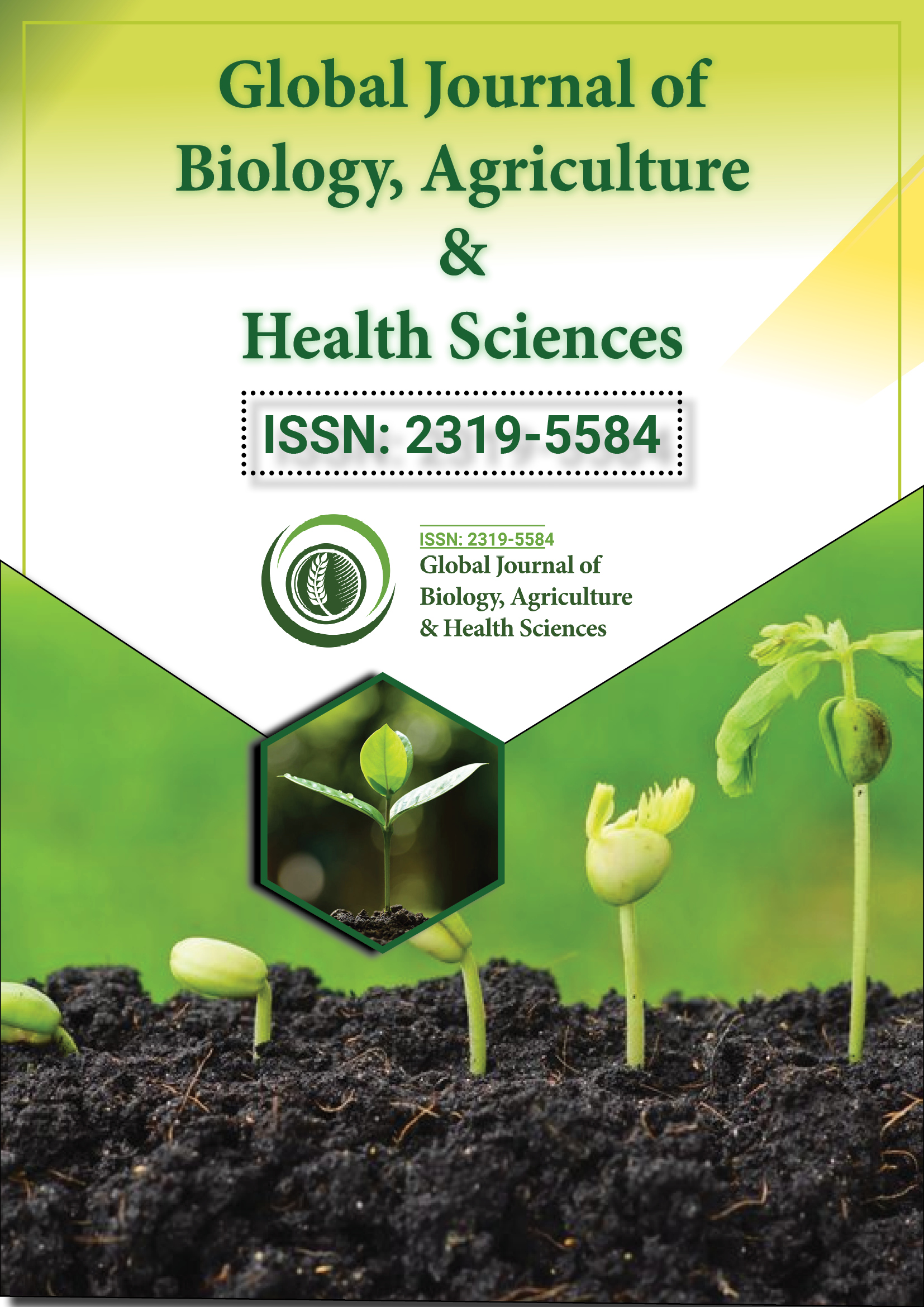Indexed In
- Euro Pub
- Google Scholar
Useful Links
Share This Page
Journal Flyer

Open Access Journals
- Agri and Aquaculture
- Biochemistry
- Bioinformatics & Systems Biology
- Business & Management
- Chemistry
- Clinical Sciences
- Engineering
- Food & Nutrition
- General Science
- Genetics & Molecular Biology
- Immunology & Microbiology
- Medical Sciences
- Neuroscience & Psychology
- Nursing & Health Care
- Pharmaceutical Sciences
Perspective - (2025) Volume 14, Issue 2
Genetic Drift and Its Influence on Small Population Species Survival
Carlos Ibanez*Received: 26-May-2025, Manuscript No. GJHABS-25-29939; Editor assigned: 28-May-2025, Pre QC No. GJHABS-25-29939 (PQ); Reviewed: 11-Jun-2025, QC No. GJHABS-25-29939; Revised: 18-Jun-2025, Manuscript No. GJHABS-25-29939 (R); Published: 25-Jun-2025, DOI: 10.35248/2319-5584.25.14.253
Description
Species with limited population sizes face several challenges that threaten their long-term persistence. While habitat fragmentation, hunting, and environmental changes are wellknown contributors to population decline, internal genetic mechanisms also play a significant role. Among them, genetic drift random changes in allele frequencies across generations can drastically alter genetic composition, especially in small or isolated groups.
Genetic drift operates regardless of the fitness value of alleles. Unlike selection, which favors traits with reproductive advantages, drift acts through stochastic processes, where chance determines which individuals reproduce. In small populations, a single reproductive event or death can disproportionately influence the gene pool. Over time, this process reduces genetic variation, which may limit the species’ ability to adapt to environmental fluctuations or resist pathogens.
One immediate consequence of genetic drift is the loss of heterozygosity. As allele frequencies fluctuate randomly, some variants disappear entirely, leaving fewer options for future generations. This shrinkage of the genetic pool can make populations more uniform at the genetic level, increasing vulnerability to disease or environmental stress. In some cases, drift can fix deleterious alleles, leading to the spread of traits that reduce fitness. This situation becomes more severe when combined with inbreeding, which is often unavoidable in very small populations.
The effects of genetic drift are evident in numerous endangered species. For example, island populations often display lower genetic diversity compared to their mainland counterparts. A case in point is the Channel Island fox, where separate populations on different islands developed distinct genetic profiles due to long periods of isolation and random fluctuations. These genetic bottlenecks made them more susceptible to disease outbreaks and reproductive failure. Conservation efforts needed to introduce genetic material from other populations to restore diversity and enhance survival prospects.
In some species, even relatively large populations can suffer from genetic drift if effective population size is low. This concept differs from census size; the actual number of individuals contributing genetically to the next generation can be much smaller due to skewed sex ratios, social structure, or mating systems. For instance, if only a few dominant males breed in a group of hundreds, the effective size may be in the tens. Consequently, the impact of drift becomes more pronounced, and loss of genetic diversity accelerates.
Mitigating the effects of genetic drift involves conservation strategies that maintain or restore gene flow. When populations are connected through migration or assisted translocation, alleles are exchanged, maintaining variability. Creating wildlife corridors, managing habitat to allow movement, or even moving individuals between fragmented areas are practical steps. In captive breeding programs, genetic drift is managed through carefully designed breeding protocols that aim to preserve the full range of genetic variation from the wild stock.
Genomic technologies have improved the ability to detect and manage genetic drift. High-throughput sequencing and population genetics models allow researchers to track allele frequencies over time, identify losses in variation, and project future changes. Conservationists can use this information to prioritize individuals for breeding or relocation. In some cases, cloning or genome editing is considered as a last resort to reintroduce genetic elements lost to drift, though ethical and ecological concerns must be evaluated.
Conclusion
Genetic drift is a natural process that, while subtle, exerts significant influence over time, particularly in small populations. Its consequences loss of variation, fixation of harmful alleles, and reduced adaptability pose serious risks to species survival. Effective management requires maintaining population sizes, encouraging connectivity, applying genetic monitoring, and promoting conservation strategies that value diversity as a buffer against future challenges. Public awareness and policy also matter. Protecting large habitats, regulating land use, and supporting genetic monitoring programs require resources and coordinated efforts. Legal frameworks that recognize the importance of genetic diversity can drive funding and enforcement.
Citation: Ibanez C (2025). Genetic Drift and Its Influence on Small Population Species Survival. Glob J Agric Health Sci. 14:253.
Copyright: © 2025 Ibanez C. This is an open-access article distributed under the terms of the Creative Commons Attribution License, which permits unrestricted use, distribution and reproduction in any medium, provided the original author and source are credited.

